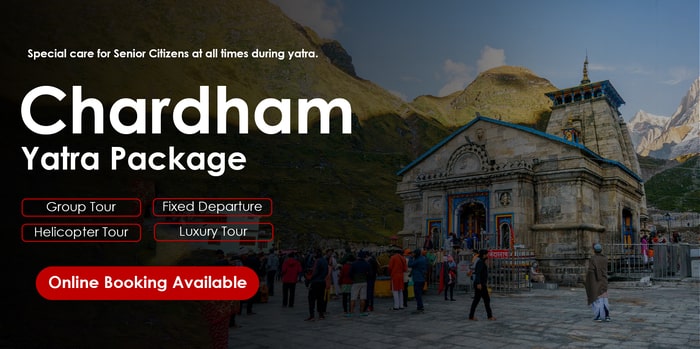Last Updated on December 26, 2024
The Hindu temple of Kedarnath is one of the holiest and most sacred shrines in India. Situated high among the Garhwal Himalayan range at a height of 3,583 meters above sea level, the temple site offers its visitors some of the most panoramic and scenic views of the surrounding landscape. This temple is dedicated to Lord Shiva, and as history dictates, this prime center of pilgrimage was established by the Pandava brothers. The temple is not directly accessible by road and can only be reached after covering an uphill trek of 18 km, which commences from Gaurikund. Apart from being one of the significant parts of the Chota Char Dham Yatra, the temple is also one of the 12 primary Jyotirlingas of India.

Kedarnath can only be reached during the summer months when the snow has melted and the roads have been cleared for the journey. The gates open at the onset of the summer months on the eve of Akshaya Tritiya, which falls during the months of April and May. During the open season, several thousand devout Hindu pilgrims undertake this journey to cleanse their souls and attain moksha in life. There are numerous options to reach Kedarnath Dham if you are not too keen on walking all the way. Mules and palanquins are available for a more comfortable journey. Additionally, helicopter services for the Char Dham Yatra are also provided for people seeking a convenient alternative. These options are usually taken up by senior citizens and people suffering from some sort of physical ailment.
If you are planning to undertake this potentially life-changing pilgrimage journey, then you must follow these preparatory guidelines:
1. Check for Timings:
First and foremost, remember to undertake this pilgrimage during the appropriate time. Keep an eye on the opening dates of Kedarnath Dham, which usually occur between the months of April and May, during the eve of Akshaya Tritiya. The yatra halts temporarily during the months of June to August due to heavy rainfall when the entire region becomes vulnerable to landslides and mudslides, making the pilgrimage journey extremely difficult. The month of September, right after the rainy season, is the best time to visit the Dham. The temple doors shut for the pilgrimage between the months of October and November during Diwali.
2. Hire a Tour Operator:
If this is your first time, ensure you hire an experienced tour operator who will successfully guide you to your destination. It is advisable to opt for a guide, as they will have the best knowledge about the area, including accommodation, food options, nearby sightseeing areas, and the exact darshan timings.
3. Medical Checkup:
To cover this journey, people need to be physically fit. Consult a physician about 3 months prior to the commencement of your journey. This consultation should include a thorough check-up to ensure you are fit to undertake the strenuous trek. Be sure you are not suffering from high blood pressure, diabetes, cardiac disease, or any related health issues. Carry your required medications for the entire journey and seek appropriate treatment before starting your yatra.
4. Clothing:
Being situated at a high elevation among snow-capped mountains, it is advisable to carry a heavy warm jacket, woolen clothes, warm gloves, and trekking boots. The temperatures at night tend to drop below zero, making winter clothing necessary. You should also carry mufflers, winter caps, sunglasses, and sunscreen to protect your skin from sunburn.
5. Luggage Requirements:
Avoid carrying heavy and bulky luggage, as it will only slow you down during the journey. You can use Haridwar or Rishikesh as your base camp, where you can leave unnecessary heavy baggage. Only carry small bags with your essentials, such as packets of dry fruits for energy during your yatra, limited clothing, and your medicines and first aid kit.




 Call
Call WhatsApp
WhatsApp Enquiry
Enquiry